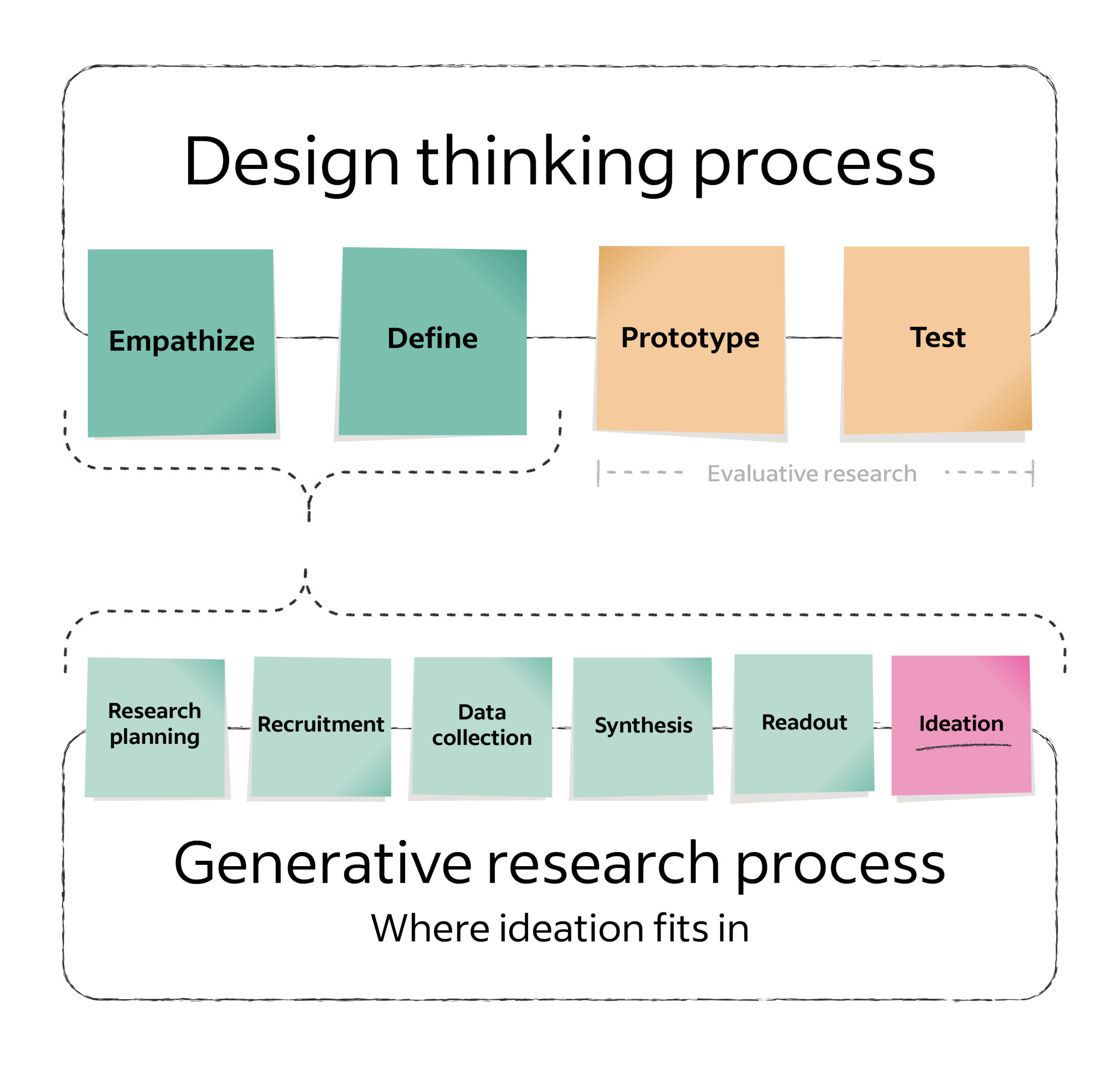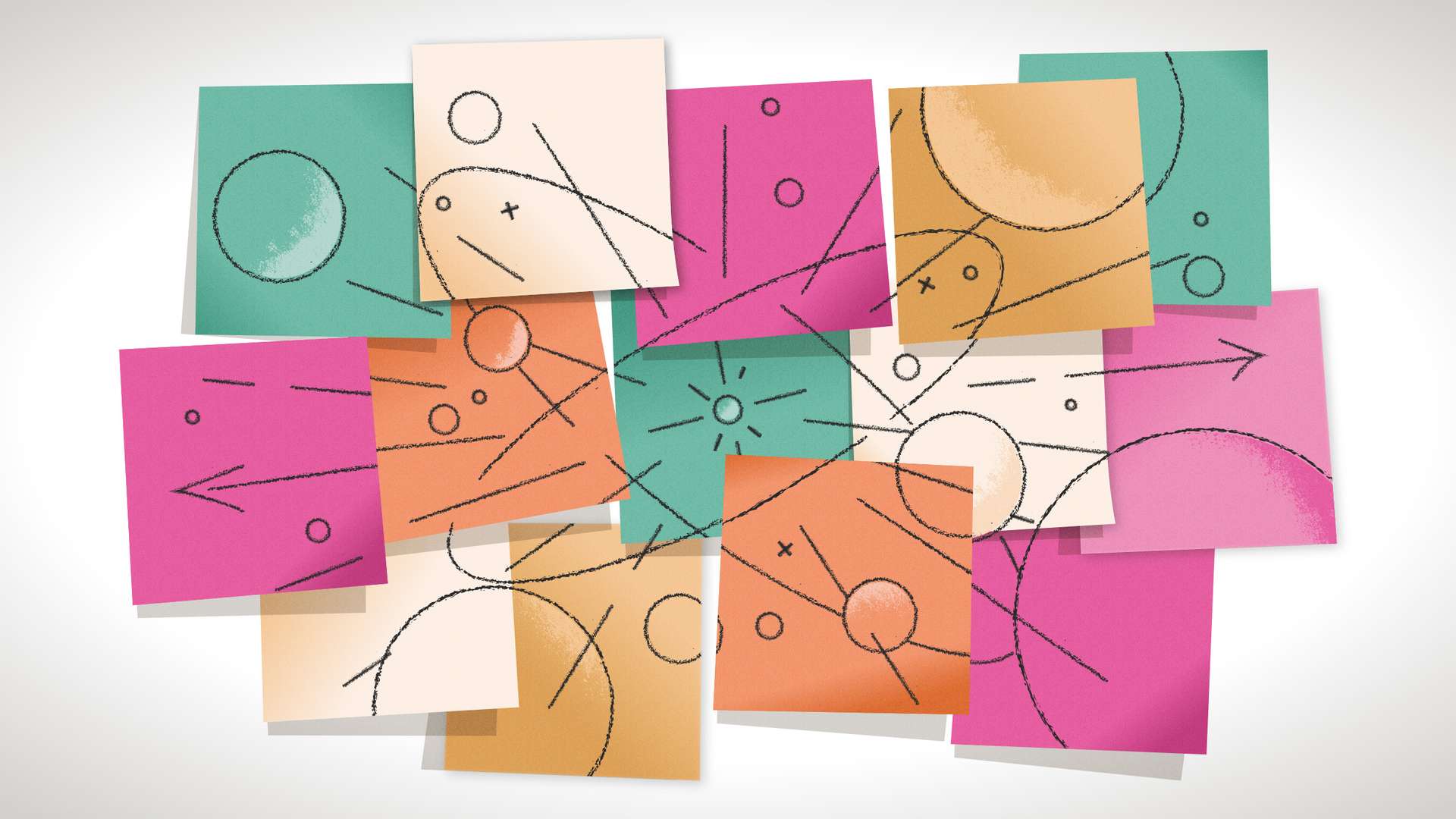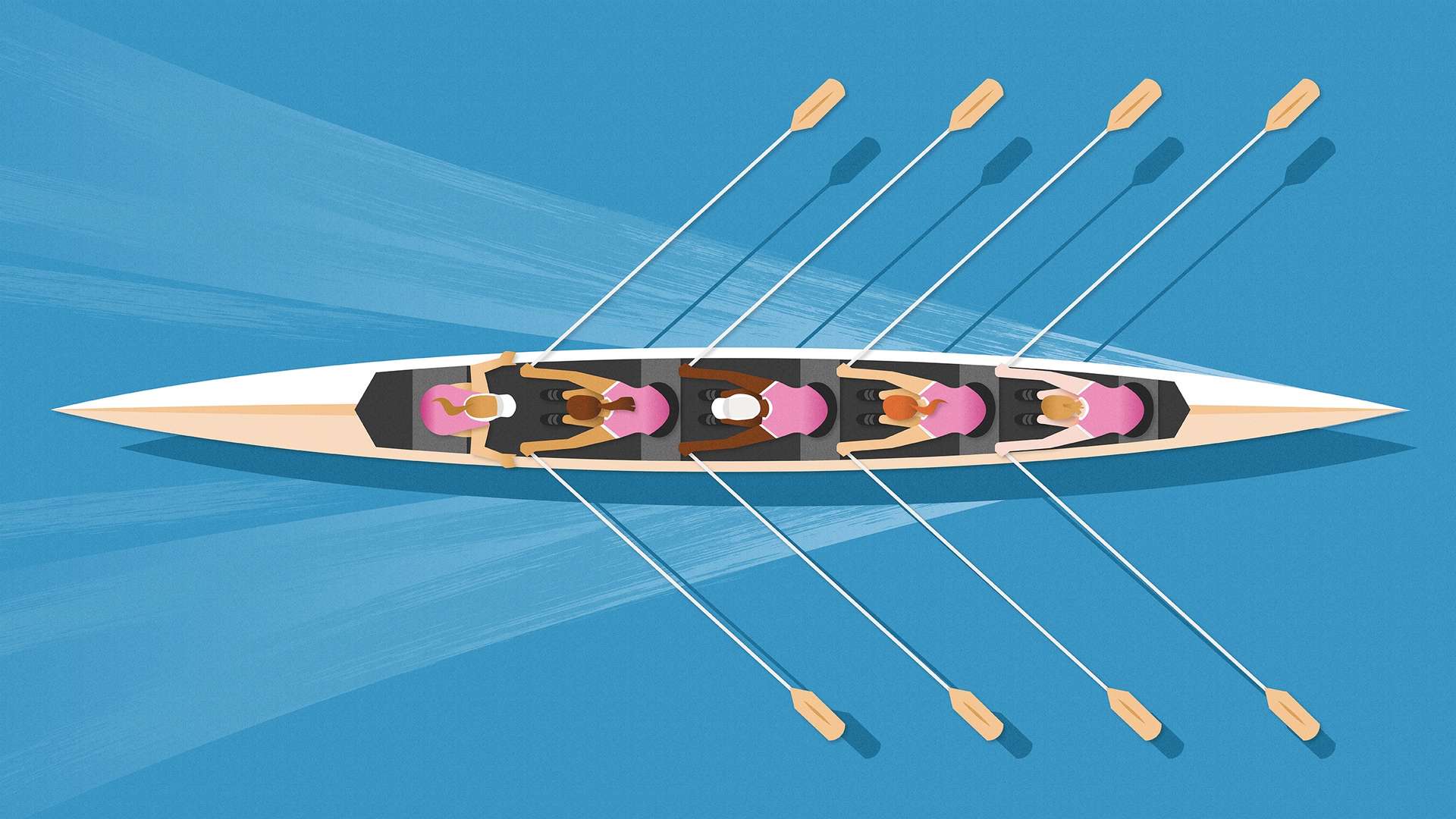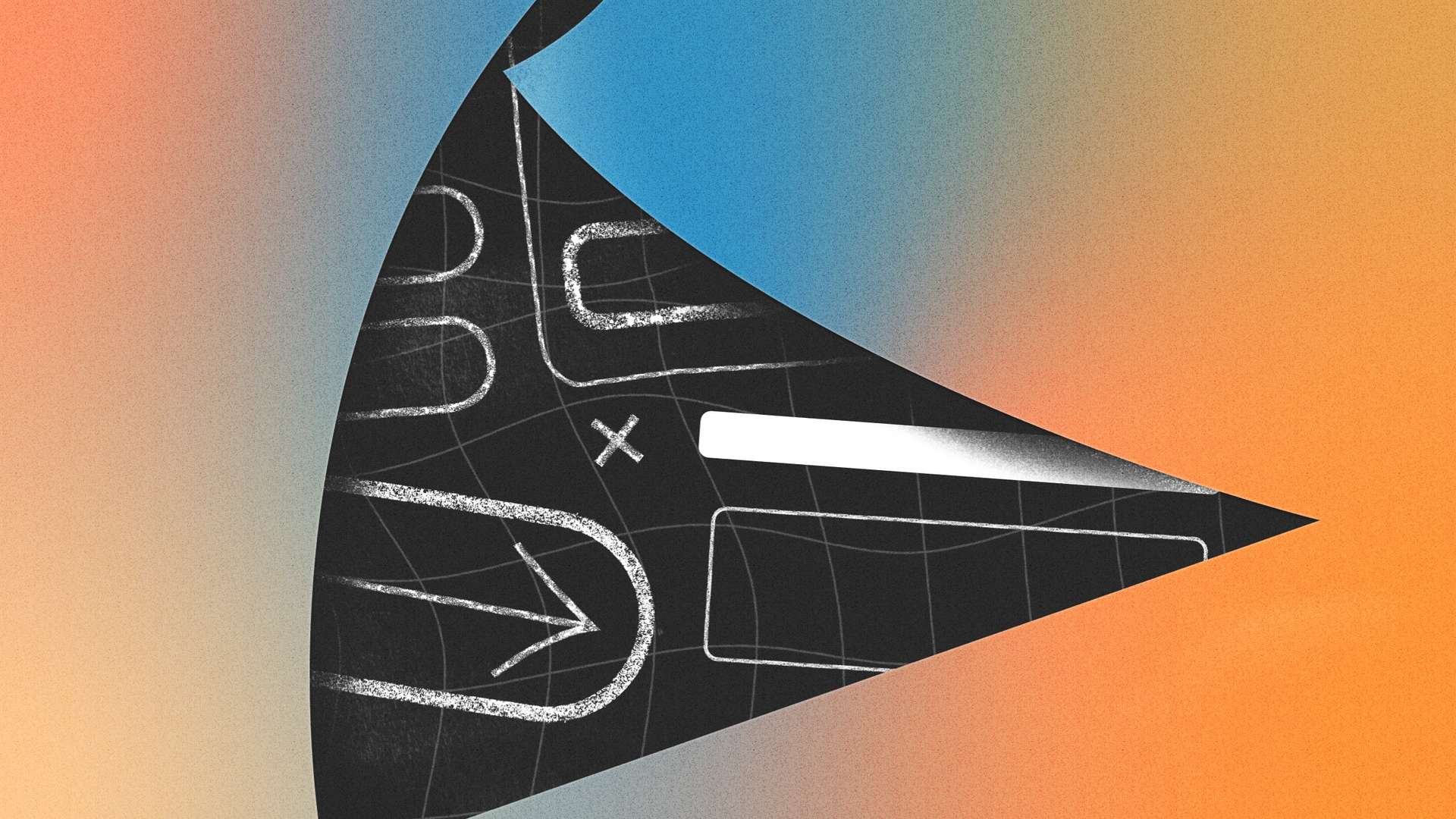UX researchers often struggle to clearly trace the impact of their generative research to direct product improvements. It’s critical to show the impact of this type of “green space,” discovery research that supports product innovation, and ideation sessions are one effective way to do this. This ideation phase may not necessarily be a concrete part of every researcher’s regular process, but it can be a valuable addition to our work.
These sessions build off open-ended opportunities framed as “how might we?” statements that stem from research-driven insights. Ideation—structured group and solo brainstorming toward solutions—is a fundamental phase of the design-thinking process. It ensures that products we build are focused on solving tangible human problems uncovered by systematic research. Ideation sessions can help build alignment across stakeholders and make it easier to show how research was the catalyst for change in the product.
Without ideation, teams run the risk of wasting time building features that don’t solve core user problems. In this article, I’ll share tips for running ideation sessions based on my past experience. I’ll also share tools my team and I have developed and implemented that might help your teams conduct ideation together in asynchronous or synchronous settings.

It’s worth noting: Time is often of the essence in fast-moving businesses like Indeed. I typically use my readouts, “how might we” statement development, and ideation as the “emphasize” and “define” stages of the design-thinking process. If you have more time, activities like statement starters and problem tree analysis are ideal for defining the problem further with your stakeholders from multiple angles before jumping into ideation. I won’t cover these topics in this article, but I recommend reading more if you’re curious about problem-definition design-thinking activities.
Benefits of ideation sessions
My foundational training in participatory action research taught me that research is to be acted upon and used to create change. This approach is grounded in the principle that research is a participatory process ultimately intended to improve communities through collaborative, research-informed interventions. At Indeed, I use my training in participatory action research and design thinking to help my team use insights from my research to immediately think about how to build solutions grounded in that research.
These workshops have many benefits, but they’re mainly centered around two themes:
- Fostering collaboration across teams and disciplines
- Ensuring human-centered research influences long-term product strategy and vision
Here’s how adopting and documenting your research-focused ideation sessions can benefit your team and the quality of your work.
Get a diverse set of solution ideas
Ideation sessions can help create an inclusive environment. By including a variety of cross-functional team members (and even potentially research participants), you’ll have the benefit of hearing different perspectives on solutions that you may not have considered before.
“Getting a group together to brainstorm after research readouts is a great way to generate multiple ideas for solving the problems identified, and gets the team excited about the work. It’s an important part of leading an inclusive, collaborative team.”
— Blair Madole-Linkow, Senior Product Manager
Foster a culture of creativity and experimentation
Regular ideation sessions maintain a steady undercurrent of creativity and safe risk taking for your teams, which can lead to lasting culture change. They’re also fun and can bring a welcome change into the grind of day-to-day meetings.
The goal of an ideation session is to first generate as many ideas as possible. No idea is a bad one. Your team can determine quality and feasibility later in the design-thinking process (through closing or prioritization activities). Over time, this openness to all ideas can help to build a team culture of inclusiveness, openness to fresh perspectives, and experimentation.
“Sometimes you forget how close you were to the work in the first place. Cross-team stakeholders in an ideation session provide a fresh set of eyes to look over what you’ve done and what you’ve learned so you can attack the problem from a new angle.”
— Steve Jacobs, UX Content Designer
Generate buy-in across teams
Ideation sessions can also help create alignment across teams with potentially distinct goals. They foster collaboration by actively encouraging team members to take part in developing solutions and having a say in what gets built.
As UX researchers, it’s our job to consider both user needs and business objectives in our recommendations. Ideation sessions help us gain a better understanding of stakeholder goals across disciplines such as product, engineering, design, content, marketing, and others. And they can help make us more confident that we’re aligning potential solutions to business goals.
“A major benefit of recent ideation sessions was being able to listen to stakeholders from across the company who work with other customers express similar pain points that our customers experience. This gave me a jumping-off point to build new relationships across the company.”
— Nick Braver, Senior UX Designer
Facilitate product impact
Ideation sessions can also help prove the impact of our research in concrete ways. Research-informed ideas can become tickets for the backlog faster.
We can see tangibly where our work initially sparked new solution ideas, prioritize those ideas, and tackle low-effort, high-impact quick wins first. These sessions encourage stakeholders to pause and actively pay attention to the research so it can be integrated into the product.
“Generative studies feel like opening up a wealth of new insights. Bringing the team together to ideate using that data has helped us explore a breadth of new ideas and questions that guide new tracks of work in our product development roadmap.”
— Katie Hicks, Senior UX Designer
Tips for conducting ideation sessions
Below are some key recommendations for holding these types of sessions with your team. These are suggestions and customizable to the needs of your team. Start small, experiment, and continuously iterate!
Build time for ideation sessions
- Add planning time to your roadmap, and schedule it early to ensure participation from busy stakeholders. Organizing a session takes time, so be sure you can give it dedicated attention. Creating reusable templates can help speed things up as you continue to hold ideation sessions with your team.
- Schedule a week for the ideation session in your quarterly roadmap, during which you hold the session and then consolidate the ideas with product team members. Your product partners can then help prioritize and ticket ideas for the backlog. Ideally, researchers also remain a part of this step for maximum visibility of the solutions generated from the research.
Consider the timing of the session
- Ensure your research is fresh in stakeholders’ minds with proper framing. Schedule the session right after readout if possible. If you schedule it within the same chunk of time, be sure to add at least a 10-minute break in between readout and ideation session. Breaks are especially important during remote ideation sessions.
- Give a short, condensed version of your readout if you’re holding the ideation session more than a week after your readout. This helps to frame and refresh stakeholders’ memories on the key insights.
- Alternatively, ask readout audience members to ideate during the readout at key intervals. Sometimes, I add “pause and reflect” slides after each major chunk of insights during my readouts. During these moments, I ask audience members to add any ideas that came up during the readout to an ideation document that contains “how might we” statements that I’ve developed based on the insights and opportunities.
- These deliberate pauses encourage people to slow down and brainstorm possible solutions to the pain points I’m illuminating throughout the readout.
—
Is this article helpful? Subscribe to get occasional emails with new stories like it.
—
Foster an environment for creativity and multiple ways of thinking
- Start with an icebreaker to introduce stakeholders and teams, and to help people loosen up. I love Gamestorming as a resource for icebreakers.
- Include diverse stakeholders across disciplines and levels as relevant to the problem or product. It’s also wise to include other roles like customer support or sales that have direct contact with customers. It’s also smart to get participation from senior leadership whenever possible.
- Build in solo, small, and large-group ideation breakouts during a session. These help build consensus and spark even more new ideas. It’s especially important to allow time for solo thinking as ideas can influence each other and quiet time can be helpful for brainstorming. Group techniques also help you identify collaboration opportunities and align ideas and themes among participants.
- Note: Some brainstorming activities are designed to have ideas build off of each other (like in brainwriting), so ideas influencing each other is sometimes the end goal, too. As UX researchers love to say, “it depends,” and there’s no one right way to brainstorm.
Consider the timing of the session and the goals
- Break up the session into multiple mini-sessions, especially if you’re attempting to do both opening and exploring activities (games for fresh thinking and ideas, games for problem-solving) with your stakeholders. Make sure leadership understands that the design-thinking process takes time, but the outcome will be a holistic and participatory one that’s well worth the effort.
- Prepare everything you can before the session to leave ample time for brainstorming. For example, the pre-assign feature in Zoom allows you to break attendees into small groups before the session. Timing can especially be an issue with remote synchronous sessions. They require a lot of coordination, and potential technology issues can also suck up time. Remember that everything will likely take longer than you think it will. Plan for buffer time, and write a script for a remote session so all actions are coordinated and timing is consistent.
- Provide just enough time for each activity. Giving people too much time can cause them to think too much, second-guess their ideas, and fight their creative instincts. Use tools like background music in Miro to encourage focus and fuel creativity during solo and group brainstorming.
- Build in plenty of breaks, and don’t try to accomplish too much in one session. Zoom fatigue is real, and ideation activities (remote or not) can drain energy. Ideation sessions work well when energy is high. Your role as facilitator is also part-cheerleader.
Ensure a product team follows up on your ideas
- Make sure there are immediate plans for a product team to further review and consolidate ideas. As a next step, product teams should analyze each idea for feasibility to prioritize them for the backlog—ideally in conjunction with UX Researchers. Motivate teams to transition immediately from insight into action.
- Be wary; ideas generated during a session can sit unused on a Miro board just as research can sit on a shelf. This is especially the case in fast-moving tech companies. It can be easy for teams to continue their work as-is while producing great quantities of in-depth research. Ideation sessions help everyone stop and pause to consider what recently conducted research could mean for the product before moving onto the next piece of work.
Consider going fully asynchronous
- Invite busy stakeholders and upper leadership to include their ideas with fully asynchronous sessions, using techniques like post-up in Miro and brainwriting. It may be easier for them to add an idea to a document when their schedules prevent them from attending a session. Here’s an asynchronous ideation template that worked well for me to get an important upper-level leader involved in brainstorming.
- Come up with creative ways to incentivize busy teams to fill out asynchronous brainstorming documents. For example, you could reward your company’s store points to the person who comes up with the most ideas.
- Encourage your teammates to come up with ideas on their own, then bring those ideas together and build consensus. Asynchronous sessions help people feel like they don’t have to come up with many ideas on the spot, which may be less overwhelming. Allowing for flexible, asynchronous brainstorming helps people add ideas to documents as they come up for them, which may not happen at a scheduled time.
Ideation activates your research findings
Ideation sessions with a diverse set of stakeholders (and maybe even participants themselves) are an important follow-up phase in the research process. They are best timed immediately after presenting research insights. If you have time, you can even start first, before ideation, with the “define” phase of the design-thinking process, which aims to unpack problems and further define them across stakeholders so everyone is on the same page.
Either way, it’s ideal to build in some amount of time for ideation activities since they help trace a clear line from your generative research to new product ideas. These types of sessions are highly adaptable, and you can alter or condense them to fit the needs and goals of your team. Ideation can also help businesses ultimately reach longer-term goals of fostering a culture of inclusiveness, openness, and experimentation.
After all, creativity is the key to innovation!
Get started with these ideation templates
Below are a few adaptable starting points for conducting ideation sessions after generative research readouts. They’re meant to help you understand more about how ideation sessions look in practice—so feel free to adapt them to your needs. Remember, it’s also critical to use properly framed “how might we” statements during these sessions to help generate ideas.
Synchronous
Asynchronous
During Readout
- Pause and Reflect Ideation Template. To use this document, first create slides that say “pause and reflect” after each major chunk of insights presented in your readout. Direct your audience members to this document each time they see the slide. This method is useful if you are especially tight on time!
More reading on ideation sessions
- How Might We Statements: A Powerful Way to Turn Insights into Opportunities by Nikki Anderson
- Interaction Design Foundation
- Luma Institute
- Includes how-to guides for methods for “looking, understanding and making”
- Gamestorming
- Includes many how-to guides for activities for “opening, exploring, closing” and icebreakers
- Nielsen Norman Group
—
What are your favorite tips for working with your team to take generative studies to the next level and encourage product impact?
Find Indeed Design on LinkedIn, Instagram, or Twitter and let us know!





